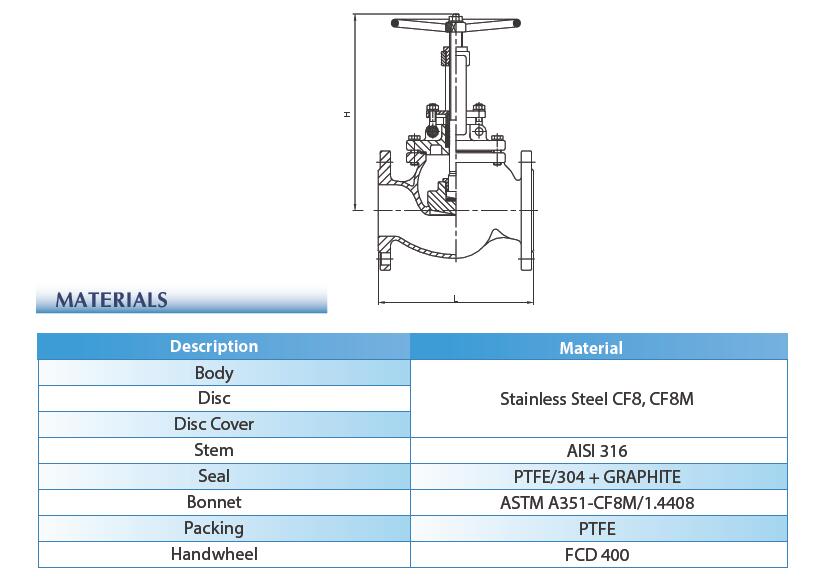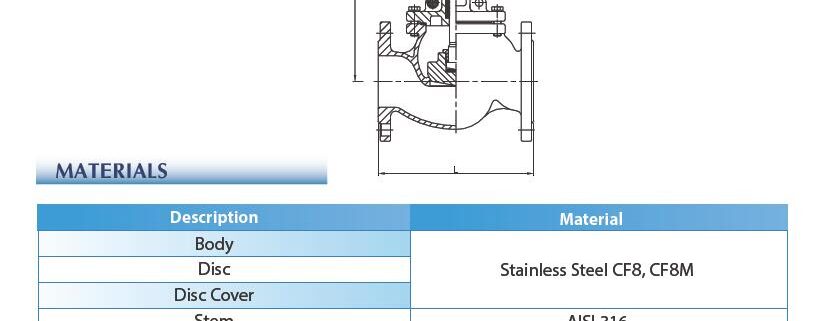The Knowledge About Parts Of Industrial Valves
Industrial valves is a mechanical device that controls the flow and pressure in a system or process. They are an important part of the pipeline system for transporting liquid, gas, steam, slurry and so on. Different types of valves can be provided: gate valve, ball valve, butterfly valve, check valve, diaphragm valve, pipe clamp valve, pressure reducing valve, control valve, etc. Each of these types has many models, and each model has different functions and functions. Some valves are operated automatically, while others are operated manually or using actuators or pneumatic or hydraulic operation.
The functions of the valve are: stop and start the flow, reduce or increase the flow, control the flow direction, adjust the flow or process pressure, and release a certain pressure.
There are many valve designs, types and models with a wide range of industrial applications. All meet one or more of the above functions. Valves are expensive items, it is important to specify the correct valve for this function and must be made of the correct material for handling liquids.
Regardless of the type, all valves have the following basic components: body, bonnet, trim (internal components), actuator and packing. The basic components of the valve are shown in the figure below.

valve body
The valve body, sometimes called the shell, is the main boundary of the pressure valve. It is the main component of the valve assembly because it is the frame that holds all parts together.
The valve body is the first pressure boundary of the valve and can resist the fluid pressure load of the connecting pipeline. It receives inlet and outlet pipes through threaded, bolted or welded joints.
The end of the valve body is designed to connect the valve to the pipe or equipment nozzle through different types of end connections, such as butt or socket welding, thread or flange.
The valve body is cast or forged in various forms, and each component has a specific function and is constructed of a material suitable for that function.
Valve bonnet
The cover of the valve body opening is the hood, which is the second important boundary of the pressure valve. Like the valve body, the bonnet is available in many designs and models.
The bonnet is used as a cover on the valve body and is cast or forged from the same material as the valve body. It is usually connected to the body by threads, bolts or welded joints. During the manufacture of the valve, place internal components (e.g. stem, disc, etc.) into the valve body, and then connect the bonnet to keep all components together.
In all cases, the hood to body connection is considered a pressure boundary. This means that the welded joint or bolt connecting the bonnet to the valve body is a pressure retaining component. Although the valve bonnet is a necessity for most valves, it has attracted people’s attention. The bonnet may complicate the manufacture of the valve, increase the valve size, represent a significant cost part of the valve cost, and is a source of potential leakage.
Valve trim
The removable and replaceable internal parts of the valve in contact with the flowing medium are collectively referred to as valve trim. These components include valve seat, disc, gland, gasket, guide rail, bushing and internal spring. The valve body, bonnet, packing, etc. are also in contact with the flowing medium and are not considered as valve internals.
The adjustment performance of the valve depends on the interface between the disk and the valve seat and the relationship between the disk position and the valve seat. Due to decoration, basic movement and flow control are possible. In the rotary motion decoration design, the disc slides tightly across the seat to produce changes in the flow opening. In the linear motion decoration design, the disc rises vertically away from the seat, resulting in an annular hole.
Valve trim components can be made of various materials because different characteristics are required to withstand different forces and conditions. The bushing and packing gland will not be subjected to the same forces and conditions as the disc and seat.
Flow medium characteristics, chemical composition, pressure, temperature, flow rate, velocity and viscosity are some important considerations in selecting appropriate decorative materials. The trim material may or may not be the same material as the body or bonnet.
Valve disc
The disc is the part that allows, throttles or stops flow, depending on its position. In the case of a plug or ball valve, the disc is called a plug or ball. Disks are the third most important primary pressure boundary. With the valve closed, the entire system pressure is applied to the disk, so the disk is a pressure related component.
Discs are usually forged and, in some designs, have a hard surface to provide good wear resistance. Most valves are named for their disk design.
valve seat
The seat or sealing ring provides a seating surface for the disc. The valve may have one or more seats. In the case of ball or swing check valves, there is usually a seat that forms a seal with the disc to prevent flow. In the case of gate valves, there are two seats; One is on the upstream side and the other is on the downstream side. The gate valve disc has two seat surfaces that contact the seat to form a seal to prevent flow.
In order to improve the wear resistance of the sealing ring, the surface is usually hardened by welding and then machining the contact surface of the sealing ring. When the valve is closed, fine surface treatment of the seat area is necessary for good sealing. The seal ring is generally not considered a pressure boundary component because the body has sufficient wall thickness to withstand the design pressure independent of the thickness of the seal ring.





